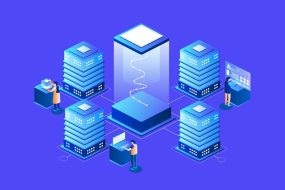
In the realm of server management, where every millisecond counts, the mastery of edge computing emerges as a pivotal force. This blog unveils the intricacies of maximizing speed and responsiveness through cutting-edge practices in server environments. As we delve into the intricacies, we navigate the landscape of server management, dissecting the nuances of edge computing to unlock unparalleled efficiency.
Understanding Edge Computing
In the fast-paced world of server optimization, edge computing takes center stage. Unlike traditional server architectures, edge computing distributes data processing closer to the source, minimizing latency. This shift in paradigm empowers businesses with lightning-fast responses, making it a game-changer in today’s digital landscape.
The Crucial Role of Latency Reduction
In the pursuit of server mastery, latency reduction becomes a strategic imperative. Cutting-edge solutions focus on minimizing delays between data transmission and processing, ensuring real-time interactions. By leveraging advanced algorithms and optimized infrastructure, businesses can achieve a level of responsiveness that sets them apart in the competitive digital arena.
Server Environment Optimization Techniques
Microservices Architecture
Embracing microservices architecture enhances scalability and agility. By breaking down applications into smaller, independent components, server environments become more flexible, allowing for rapid deployment and updates.
Content Delivery Networks (CDNs)
Implementing CDNs strategically positions server resources globally, reducing the physical distance data must travel. This not only accelerates content delivery but also enhances the overall user experience.
Edge Analytics
Integrating edge analytics into server management enables real-time data processing at the source. This approach not only minimizes data transfer but also provides immediate insights for informed decision-making.
The Impact on User Experience
In the digital realm, user experience reigns supreme. Edge computing doesn’t just optimize server performance; it directly translates into an enriched user experience. From faster load times to seamless interactions, businesses leveraging edge computing gain a competitive edge by prioritizing user satisfaction.
Security in the Age of Edge Computing
As we navigate the intricacies of server management, the question of security looms large. Addressing this concern is integral to mastering edge computing. Robust encryption, secure APIs, and continuous monitoring are pivotal components of a comprehensive security strategy.
Future Trends and Innovations
The world of server management is dynamic, with constant innovations shaping its landscape. From the rise of serverless architectures to the integration of artificial intelligence, staying ahead requires a proactive approach. The future belongs to those who embrace emerging technologies with a strategic vision.
Final Words
In the ever-evolving realm of server management, mastering edge computing is not just a choice; it’s a necessity. By prioritizing speed, responsiveness, and security, businesses can navigate the digital landscape with unparalleled agility. Edge computing isn’t just a trend; it’s a revolution in server optimization, defining the future of digital interactions.
Commonly Asked Questions
Q1: How does edge computing improve server responsiveness?
Edge computing reduces latency by processing data closer to the source, ensuring faster responses in server environments.
Q2: What role does microservices architecture play in server optimization?
Microservices architecture enhances scalability and agility, allowing for rapid deployment and updates in server environments.
Q3: Why is security crucial in the age of edge computing?
Security is paramount to protect data in server environments; robust encryption and continuous monitoring are vital components.
Q4: What future trends should businesses anticipate in server management?
Serverless architectures, artificial intelligence integration, and constant innovations are shaping the future of server management.
Q5: How does edge analytics contribute to real-time data processing?
Edge analytics processes data at the source, minimizing data transfer and providing immediate insights for informed decision-making.
Advertisement








